Reading time 4 min
Hydraulic system behind the construction of the Saqqara pyramid
Published on 05 August 2024
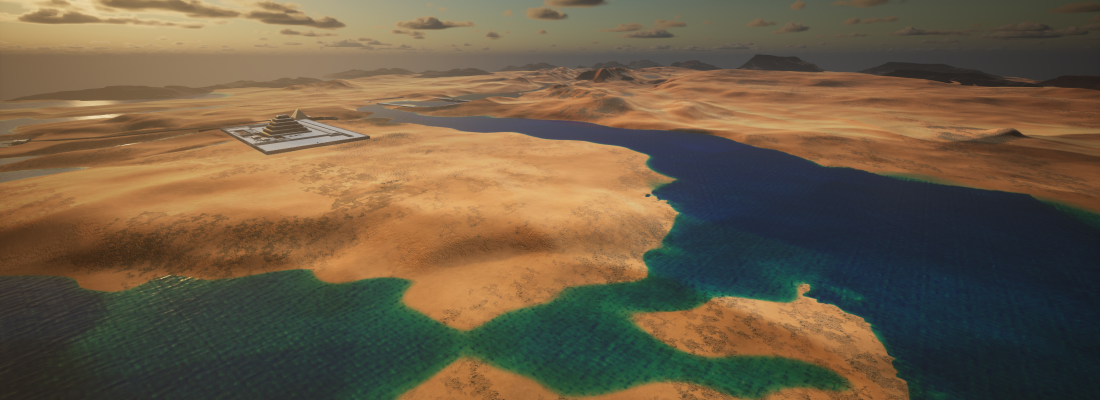
The scientific paper, ‘On the possible use of hydraulic force to assist with building the Step Pyramid of Saqqara,' published in the esteemed scientific journal PLOS ONE, unveils a complete and modern hydraulic system. This system, a unique feature in ancient engineering, would have played a pivotal role in the pyramid's construction, with building materials converging at its central axis, allowing construction in a volcano fashion. This discovery represents a significant leap in our comprehension of ancient Egyptian engineering.
The hydraulic network, a key component of the discovered system, comprises a dam, a water treatment facility, and a hydraulic elevator. These structures, whose functions have never been identified, would have operated in tandem to provide the necessary hydraulic force for constructing the Step Pyramid at Saqqara.

The Step Pyramid of Djoser in Saqqara stands as the oldest of the seven monumental pyramids of Egypt, dating back approximately 4,500 years. Its architecture is revolutionary, with many innovations, making it a technological precursor to the Cheops pyramid.
Three main discoveries
The Gisr el-Mudir dam, a structure almost 2 kilometers long.
From a multi-disciplinary analysis involving nearly ten specialities in three research organizations, researchers have discovered that one of the unexplained structures on the Saqqara Plateau, known as ‘Gisr el-Mudir,’ displays the technical signature of a dam. Sometimes considered the world's oldest monumental stone structure, the function of Gisr el- Mudir remained unknown and widely debated, with hypotheses ranging from cattle pen to fortress to celebratory arena for the pharaoh.
This gigantic dam (nearly 2 kilometers long and 15 meters thick) has actually the characteristics of a sediment trap. Built between two valley flanks, it would have regulated and filtered water while providing protection against torrential floods for the Saqqara plateau below. Its advanced geotechnical design suggests a technical tradition that largely predates the dam construction, underscoring the depth of our understanding of ancient Egyptian engineering.
Downstream of the dam, a topographical study revealed the possible existence of an intermittent lake connected to the giant moat surrounding the Djoser complex, a hypothesis confirmed by the results of geophysical and sedimentary analyses carried out by other European research teams.
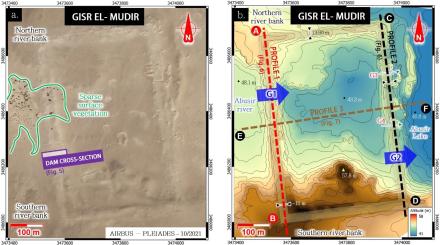
A water treatment facility
In the southern part of the moat surrounding the Djoser complex, researchers turned their attention to a monumental excavation known as the "Deep Trench", 400 meters long and 27 meters deep, cut entirely out of the rock, with a hitherto unexplained function.
By cross-referencing hydrological analyses and past archaeological findings, the researchers have shown that this structure, which comprises several successive compartments, combines all the technical features of a water treatment plant. These compartments correspond to a sedimentation basin, a retention basin, and a water purification system.
Taken as a whole, the Gisr el-Mudir and the Deep Trench form a unified hydraulic system that enhances water purity and regulates flow for practical uses and vital needs.
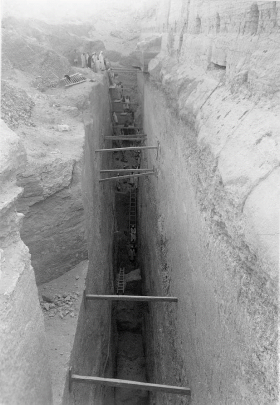
The hydraulic elevator, a revolutionary construction method
The central discovery of the scientific publication, the research team has shown that the internal architecture of the Saqqara Step Pyramid corresponds to a never-before- reported hydraulic elevator mechanism.
In particular, the researchers show that water from the Deep Trench treatment facility would have been transferred into underground conduits beneath the Djoser pyramid. These conduits, spanning 7 kilometers, had remained unexplained until now.
Through this hydraulic network, the water would have been guided to the central well beneath the pyramid (28 meters deep) and, through filling and draining cycles, would have raised a float carrying stones. Djoser's pyramid would have been erected like a volcano, with building materials arriving at its central axis.
Upon further examination, it was determined that the plug system at the shafts' base was not Pharaoh Djoser's sarcophagus but a hydraulic opening/closing mechanism! Acting as a tap, this mechanism played a crucial role in the pyramid's construction by allowing the water to fill the main shaft.
Based on available paleoclimatic data and mapping the surrounding watersheds, the researchers used a hydromechanical model to show that the water resources available during the construction period were sufficient to build the pyramid.
This work opens up a new line of research for the scientific community: the use of hydraulic power to build the pyramids of Egypt. It not only piques curiosity about the level of technical knowledge possessed by the architects of these structures, surpassing previous estimations, but also challenges the established historical narrative. Significantly, this study prompts a crucial inquiry: where might the tomb of Pharaoh Djoser be located? Could the hydraulic system, likely employed in pyramid construction, have been used to inter the king in his ultimate resting place, within the pyramid's core?
Xavier Landreau, President of Paleotechnic and main author.
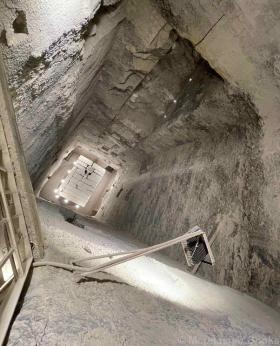
| 
|
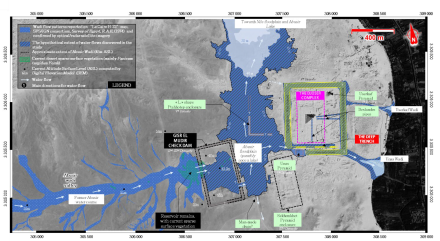
1 Picture from Swelim N. The dry moat, the south rock wall of the inner south channel. E. Czerny, et al. (eds.), OLA 149; 2006
